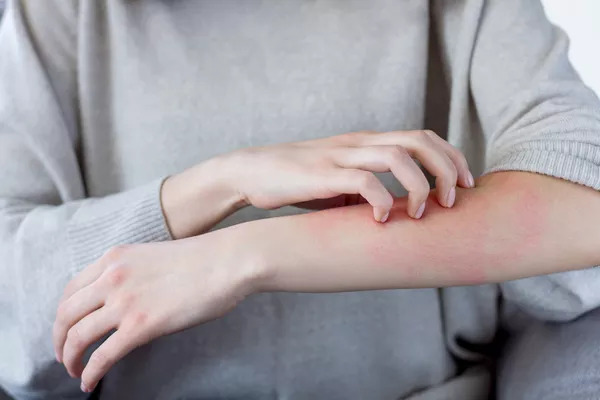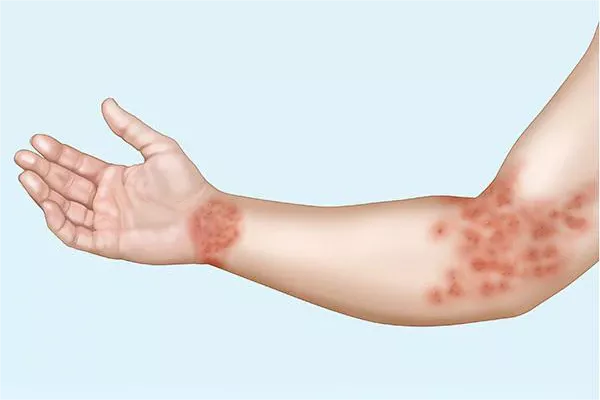Hives, also known as urticaria, are raised, itchy welts on the skin. They can appear suddenly and vary in size. Hives are often a reaction to allergens, medications, or stress. While they usually resolve on their own, finding the right ointment can help alleviate symptoms. This article explores the best ointments for hives, how they work, and tips for managing the condition.
Understanding Hives
Hives occur when the body releases histamine and other chemicals into the skin. This release causes swelling and redness. Symptoms include:
Itching: Hives are often intensely itchy.
Swelling: The welts can swell and change shape.
Appearance: They can range from small spots to large areas.
Hives can be acute (lasting less than six weeks) or chronic (lasting longer). Identifying the cause is important for treatment.
SEE ALSO: Why Do Hives Show Up in Different Places?
Types of Ointments for Hives
When treating hives, several types of ointments can provide relief. Here are some of the most effective options:
1. Antihistamine Creams
Antihistamine creams are commonly used to relieve itching and reduce swelling. They block histamine, the chemical that causes hives.
Common Ingredients: Look for ingredients like diphenhydramine or cetirizine.
Application: Apply a thin layer to the affected area as needed.
2. Hydrocortisone Cream
Hydrocortisone is a mild corticosteroid that helps reduce inflammation and itching.
Strength: Available over the counter in 1% strength; stronger options require a prescription.
Use: Apply a small amount to the affected area one to two times daily.
3. Calamine Lotion
Calamine lotion is a soothing treatment for various skin irritations, including hives.
How It Works: It contains zinc oxide, which helps dry out oozing or weeping lesions.
Application: Shake well and apply to the skin for relief from itching.
4. Moisturizing Ointments
Keeping the skin moisturized can help alleviate irritation caused by hives.
Ingredients: Look for ointments containing ingredients like aloe vera, glycerin, or shea butter.
Function: These help create a barrier and reduce dryness.
5. Prescription Ointments
In severe cases, a doctor may prescribe stronger ointments or creams.
Types: These may include stronger corticosteroids or calcineurin inhibitors.
Consultation: Always consult a healthcare professional before using prescription medications.
How to Choose the Right Ointment
Selecting the best ointment for hives depends on various factors. Consider the following:
Severity of Symptoms
Mild Symptoms: Over-the-counter antihistamine creams or hydrocortisone may suffice.
Severe Symptoms: Prescription-strength options may be necessary.
Skin Sensitivity
Sensitive Skin: Choose hypoallergenic and fragrance-free products to avoid further irritation.
Allergies: Check for known allergens in ointments to prevent worsening symptoms.
Duration of Hives
Acute Cases: Short-term treatments may work well.
Chronic Cases: A more comprehensive treatment plan may be required.
Application Tips
To maximize the effectiveness of ointments, follow these tips:
Clean the Area
Wash Hands: Always wash your hands before and after applying ointments.
Clean Skin: Gently cleanse the affected area with mild soap and water.
Apply Sparingly
Thin Layer: Use a small amount; more is not always better.
Massage Gently: Rub the ointment into the skin gently to ensure absorption.
Frequency of Application
Follow Instructions: Adhere to the recommended frequency as indicated on the product label.
Monitor Symptoms: If symptoms persist or worsen, consult a healthcare provider.
Additional Remedies for Hives
In addition to ointments, several home remedies may help alleviate hives:
Cold Compresses
Applying a cold compress can provide immediate relief from itching and swelling.
How to Use: Wrap ice in a cloth or use a cold pack. Apply it to the hives for 10-15 minutes.
Oatmeal Baths
An oatmeal bath can soothe irritated skin.
Preparation: Add colloidal oatmeal to lukewarm bathwater.
Soak: Stay in the bath for 15-20 minutes.
Antihistamine Medications
Oral antihistamines can be effective in reducing symptoms.
Types: Common options include loratadine, cetirizine, and diphenhydramine.
Consultation: Always check with a healthcare provider before starting new medications.
Lifestyle Changes to Prevent Hives
Preventing hives is key to managing the condition. Consider these lifestyle changes:
Identify Triggers
Keep a diary of food, medications, and activities to identify potential triggers.
Common Triggers: Certain foods (nuts, shellfish), medications (antibiotics), and environmental factors (pollen, pet dander) may cause hives.
Manage Stress
Stress can exacerbate hives. Incorporate stress-reduction techniques into your routine:
Relaxation Techniques: Try yoga, meditation, or deep-breathing exercises.
Avoid Hot Showers
Hot water can irritate the skin and worsen hives.
Preferred Temperature: Opt for lukewarm showers and limit time spent in hot water.
Wear Loose Clothing
Tight clothing can irritate the skin and trigger hives.
Choose Fabrics Wisely: Opt for breathable, loose-fitting clothing made from natural fibers.
When to See a Doctor
While many cases of hives can be treated at home, certain situations warrant medical attention:
Persistent Symptoms
If hives last longer than six weeks, consult a healthcare professional.
Severe Reactions
Seek immediate help if you experience symptoms of anaphylaxis, such as:
Difficulty Breathing: Wheezing or tightness in the chest.
Swelling: Swelling of the face, lips, or throat.
Rapid Heart Rate: Feeling faint or dizzy.
Infection Signs
If hives become infected, symptoms may include:
Increased Redness: Redness spreading from the hive.
Pus or Drainage: Fluid oozing from the welts.
Fever: A noticeable rise in body temperature.
Conclusion
Choosing the best ointment for hives can significantly improve comfort and reduce symptoms. Options include antihistamine creams, hydrocortisone, calamine lotion, and moisturizing ointments. Always consider the severity of symptoms and skin sensitivity when selecting a treatment. Additionally, incorporating lifestyle changes and home remedies can help manage hives effectively. If symptoms persist or worsen, seek medical advice to ensure proper care.
Related topics:

























